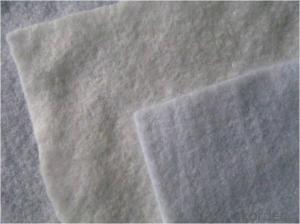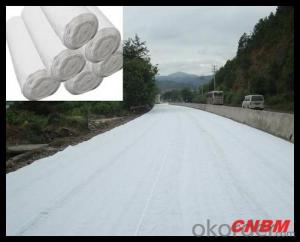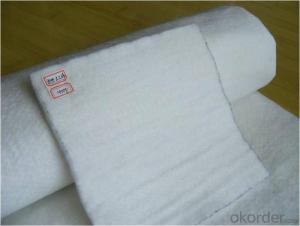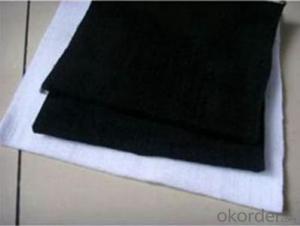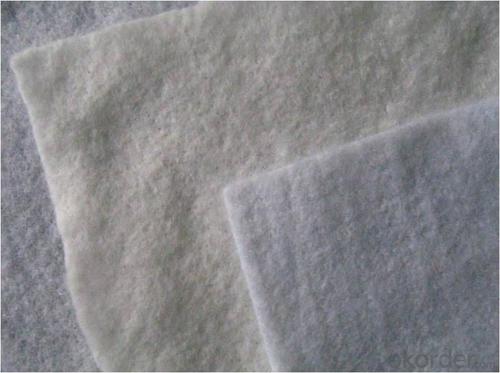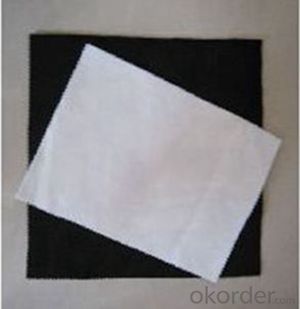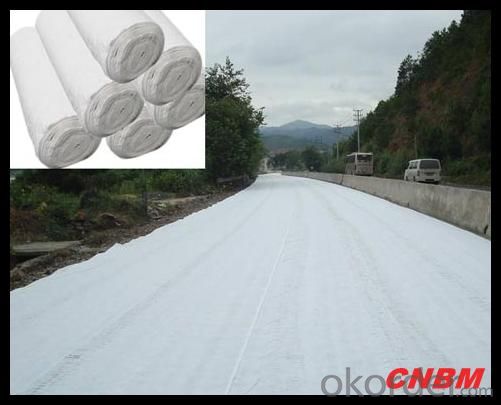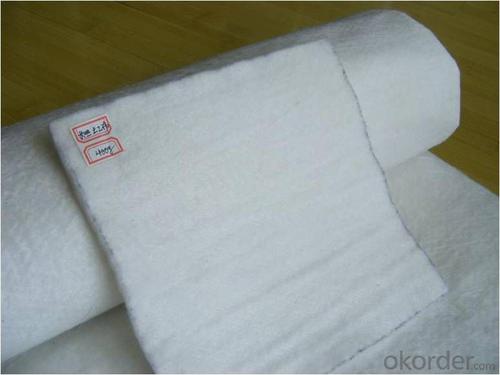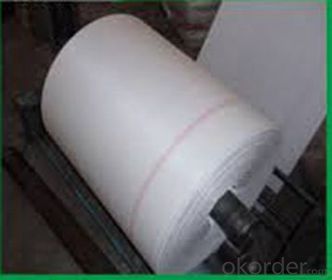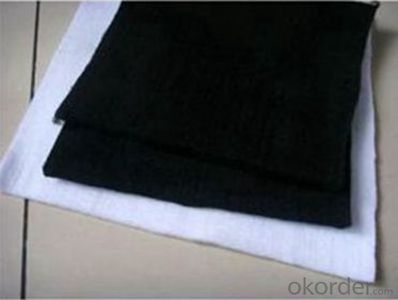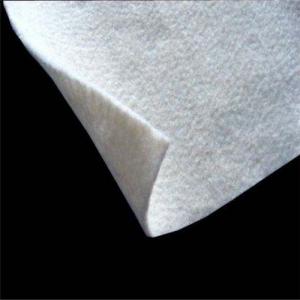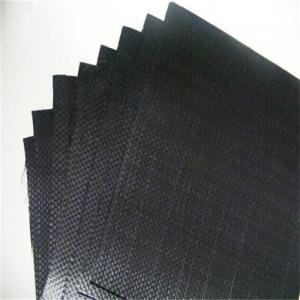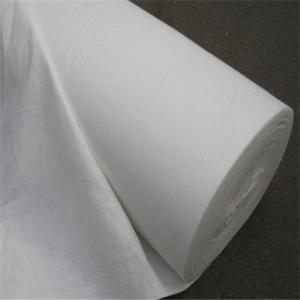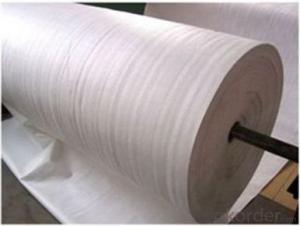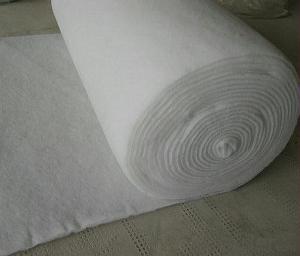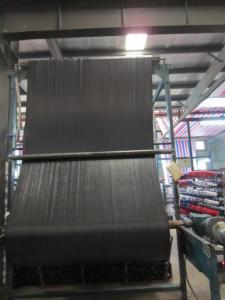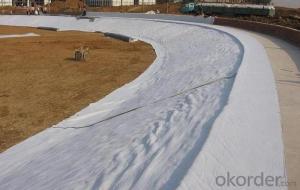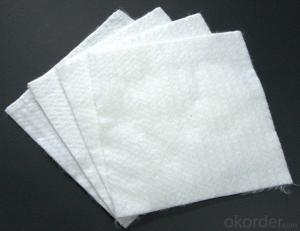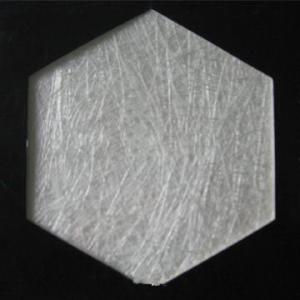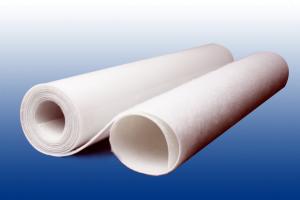Woven Polypropylene Geotextile Fabric for Road Construction CNBM
- Loading Port:
- China main port
- Payment Terms:
- TT OR LC
- Min Order Qty:
- 4000 m²
- Supply Capability:
- 1000000 m²/month
OKorder Service Pledge
OKorder Financial Service
You Might Also Like
Specification
Product Description:
Nonwoven Geotextile Fabric for Road Construction Geotextile
Product Features
|
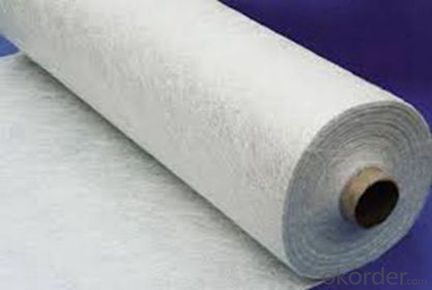
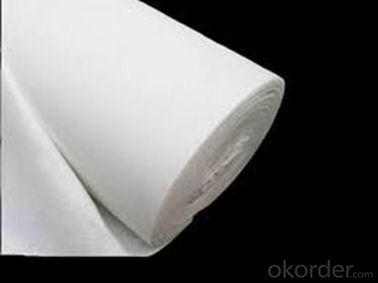
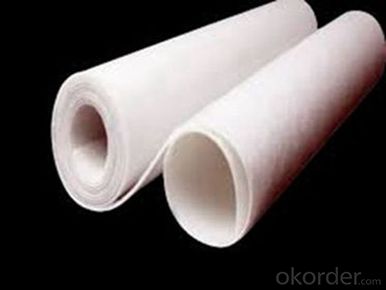
After-sales service
1.In order to provide customers with comprehensive technical support,we will provide technical and other related information upon request in a timely manner.
2.In required,we will appoint specialized technicians to the construction site to give technical trainings to construction people,and offer technical guidance throughout the whole construction process.
3.For damage due to shipment and delivery,after we receive the complaint,we will check the issure through provided pictures and videos.If our responsibility is confirmed,we wil offer free replacement.
4.When the construction is completed,as your request,our technical staff may participate in the final acceptance.
FAQ:
Q: What kind of payments does jenor support?
A: T/T, L/C, Cash are accepted.
Q: Do you charge for the samples?
A: Accordeing to our company policy, the samples are free, we only charge the freight fee. And we will return the freight fee during the next order.
Q: Can you produce according to customers' design?
A: Sure, we are professional manufacturer, OEM and ODM are both welcome.
Q: Do you have other products?
A: Yes, please check the pictures:
Packaging & Shipping
Packing: PLASTIC FILM INSIDE, AND WOVEN BAG OUTSIDE
Shipping: About 15 days after receipt the deposit
geotextile fabric
permeability,filtration,easy for construction
ISO and CE certificate
Good quality and competitive price
- Q: Are geotextiles suitable for use in drainage ditches?
- Yes, geotextiles are suitable for use in drainage ditches. Geotextiles are often used to enhance the performance of drainage systems by providing filtration, separation, and reinforcement. They can help prevent soil erosion, retain fine particles, and improve water flow, making them an effective solution for drainage ditch applications.
- Q: What are the applications of geotextiles in coastal engineering?
- Geotextiles have various applications in coastal engineering, including erosion control, shoreline stabilization, and beach nourishment. They are commonly used to prevent soil erosion by acting as a barrier against wave action and currents. Geotextiles can also be employed in the construction of revetments, breakwaters, and groins to enhance coastal protection. Additionally, they facilitate beach nourishment projects by retaining sand and sediment, preventing their erosion and maintaining the shape and stability of beaches.
- Q: How do geotextiles affect water quality?
- Geotextiles can have both positive and negative impacts on water quality. On the positive side, geotextiles can act as a filtration system by preventing sediment and other pollutants from entering water bodies. They can also promote water infiltration and reduce erosion, thus helping to maintain water quality. However, if not properly installed or maintained, geotextiles can become clogged with sediment or create barriers that disrupt natural water flow, leading to potential water quality issues. Therefore, it is crucial to consider the specific design, installation, and maintenance requirements of geotextiles to ensure their positive impact on water quality.
- Q: Are geotextiles suitable for use in rain garden systems?
- Yes, geotextiles are suitable for use in rain garden systems. Geotextiles help to retain and filter water, prevent soil erosion, and provide stability to the rain garden system. They also allow water to infiltrate slowly, reducing runoff and promoting better water management in rain gardens.
- Q: White geotextile surface from the particles?
- First of all, to see your problem after I went to the workshop to see the next, geotextile surface is generally not from the particles. Later, after I carefully looked and found that the geotextile surface occasionally there will be a little white dot-like material, about 0.2-0.5mm in diameter, a square meter of geotextile above will not have more than five such particles, which may With the geotextile fiber, if the particles are not a lot of words will not affect the quality of geotextile products. Suggest that you do not have to worry about it.
- Q: How long do geotextiles last?
- Geotextiles can last anywhere from 5 to 25 years, depending on various factors such as the quality of the material, environmental conditions, and the specific application they are used for.
- Q: I only know how many grams per gram of geotextile, but do not know what the meaning of this TS30? More
- Should be a product line, 30 should also be the quality of square meters you can consult the Baili Fu dealer
- Q: How do geotextiles contribute to sediment control?
- Geotextiles contribute to sediment control by acting as a barrier that prevents soil erosion and sediment movement. They are placed in areas where soil erosion is likely to occur, such as construction sites or slopes, and help to stabilize the soil by allowing water to pass through while retaining sediment particles. This prevents the sediment from being washed away by water runoff, ultimately reducing the amount of sediment that enters nearby water bodies and preventing environmental degradation.
- Q: Can the geotextile function be a filter?
- The role of geotextile can do water filtration.
- Q: Ask geotextile factory in the use of geotextile aperture detector detection method which?
- Hello, geotextile detection method in GB / T and GB / T geotextile aperture in the introduction, you can look at these two standards. The first is geotextile pore size detection wet sieve method, the second is geotextile aperture detection dry sieve method. As the name suggests the first of these two methods is the participation of water, the other is basically the same, are placed in a single layer of geotextile standard small particles, through the vibration to detect the size of the leakage of particles to determine the geotextile pore size size. The difference is that the first standard in the need for continuous water on the particles, so the calculation method are also different. Specific detailed distinctions You can search these two criteria separately.
Send your message to us
Woven Polypropylene Geotextile Fabric for Road Construction CNBM
- Loading Port:
- China main port
- Payment Terms:
- TT OR LC
- Min Order Qty:
- 4000 m²
- Supply Capability:
- 1000000 m²/month
OKorder Service Pledge
OKorder Financial Service
Similar products
Hot products
Hot Searches
Related keywords
